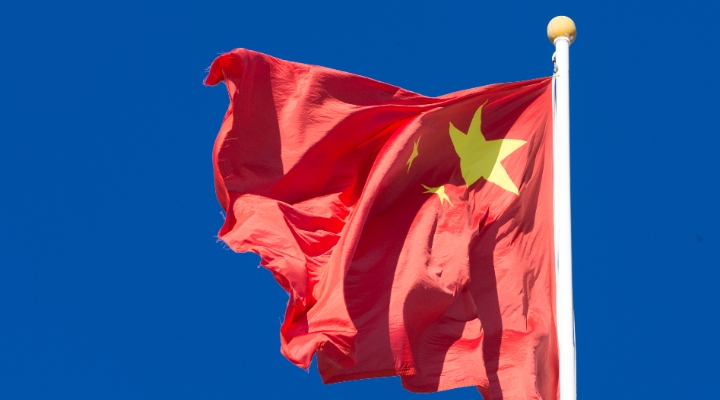
Traditionally, multi-asset funds come with many positives – a cross-asset investable universe, diversification, (for most funds) dynamic adjustments in the stock-bond mix, and dividend potential. Most of these advantages leverage a considerably broad investment universe.
Greater China allocation funds apply a similar cross-asset approach, but the universe that fund managers could maneuver is limited to mainland China, Hong Kong, and Taiwan. How did they fare in 2021?
In a difficult year like 2021, confidence in China’s growth was shaken. Major regulatory reforms collided with a potential default scenario with some of the largest property developers after the country tightened its funding sources. Both stocks and bonds suffered. The Hang Seng Index, the CSI 300 Index are down 3.57% and 2.27% year to date.
Drawdown
The regulatory consolidation in China swept up large e-commerce and education names, outweighing the robust rally in the semiconductors and other tech hardware from Taiwan. It comes as no surprise that Greater China-focused funds saw a deep drawdown. For both greater China allocation and equity funds, the third quarter of 2021 marked the second-largest drawdown in the past five years. At the end of September, the five largest greater China equity funds were 15% below their previous peak. Greater China allocation funds experienced a less painful retreat, with an 8.4% drawdown.
Based on the trailing five-year track record, allocation funds were unable to fully avoid a drawdown when equity markets slumped. But for four out of the five drawdown phases, allocation portfolios were protected by a buffer layer.
Concerns around the Sino-US trade dispute dragged the Chinese equity markets in 2018 (Exhibit 1). At that time, the backdrop proved to be particularly difficult for managers of Value Partners Classic and JPM Greater China, which posted a 30% maximum drawdown.
This time around, besides an equity rout, investors in Chinese assets are also enduring a bond price meltdown in the Chinese property names following the financing difficulties set off by the China Evergrande Group.
Explaining the Differences
Patrick Ge, Morningstar manager research analyst, identified two reasons that most greater China allocation funds continue to be protected by a buffer, despite a dual hit from stock and bond.
“First, in bonds, greater China allocation funds have a natural diversification of being invested in not only the offshore US dollar bond market but also the CNH offshore and CNY-onshore China bond market.”
The CNY onshore bond market composes Chinese government bonds and bonds issued by the country’s policy banks. Because of a low correlation to the offshore market, these assets have provided some ballast in the portfolios amid losses in the offshore high yield property holdings. In comparison, pure high yield bond funds invest only in dollar-denominated Asian bonds, making them vulnerable to the bond price collapse after Evergrande nearly defaulted on its US dollar bonds.
“Secondly, an allocation portfolio can invest in other assets like gold and other commodities. Another notable investment process for some multi-asset funds is to use index hedges to reduce market impacts without selling underlying stock and bond positions.” Take Bronze-rated Schroder China Asset Income as an example. The September-end 2021 portfolio composed 7% in other assets including commodities, 7% in hedges, and 2% in cash. For the core portfolio, 43% of assets went to onshore and offshore Chinese equities and the remaining 41% in bonds.
But investors should note that the cushioning effect isn’t promised. At the end of October, Bronze-rated UBS KSS China Allocation Opportunity exceeded its previous worst levels seen in 2018. Investors can see clues from a similar plunge in the firm’s greater China equity strategy.
In the equity sleeve of the China Allocation Opportunity fund, the 2.9% weight in TAL Education (TAL) was severely punished by the share price’s 93.2% drop, dragging the fund’s returns by 2.6% between January and September. Alibaba Group (09988), which took up 3.1% in assets over the same period, also contributed 1.4% of the loss.
4 Tips to Evaluate Greater China Allocation Funds
1. Stock-Bond Allocation
When gauging greater China and other allocations, investors should examine a fund’s allocation tactics. Do the managers adjust the stock and bond portion dynamically or maintain it at a constant percentage?
“The mix between stocks and bonds is an important decision in allocation funds, and can detract from or contribute to the fund’s overall alpha,” says Ge. The split between stocks and bonds in an allocation fund is usually determined by “allocators” at fund firms.
Investors considering an allocation fund should not overlook the skill of the allocators and the impact of their calls. Deciding the right mix at the right time explains much of the returns. Typically driven by alpha generated in Chinese growth stocks, asset allocation decisions of UBS KSS China Allocation Opportunity explained 30% of the strategy’s excess return. The selection of equity and bond securities drives the remaining 50% and 20% of alpha.
“In funds with a constantly changing mix, the job of a multi-asset fund manager will be, based on macroeconomic and other signals, trying to get overweight (and underweight) the right asset classes and capture the rallies of either asset class.” It would not be ideal for an allocation fund to load up on equities in an extremely volatile market environment.
In the broad universe of allocation funds, some portfolios are mandated to rebalance regularly with an aim to maintain a constant or even balanced (50/50) weighting between stock and bond.
2. Manager
The important factor of a timely stock and bond exposure adjustment hinges on the skills of a fund management team. At Morningstar, these qualities are reflected in the People pillar of the Morningstar Analyst Rating of a covered fund.
Allocation and security selection both contributed to performance differences among allocation funds. In the case of greater China allocation, Neutral-rated JPMorgan China Income was not affected by the broad market drawdown until June. According to Ge, the equity part of the portfolio is filled with dividend-rich and value-tilted calls, which stayed resilient through mid-2021. Moreover, the fund has a weaker Morningstar analyst rating than the UBS and the Schroder products.
Besides an absence of a dedicated allocator, Ge says: “We have an Average view of the underlying asset class managers (managing or participating in the management of the JP Morgan China allocation fund), who in our opinion, compare less favorably with our preferred regional equity and bond managers.”
3. Diversification
Diversifying across asset classes is a plus of allocation funds. But investors should also consider geographic diversification, says Ge.
He continues: “Compared to Asia allocation funds, which are also popular choices for Asian investors, greater China allocation funds invest in a much smaller universe and are less diversified on a relative basis. From a macro perspective, in theory, Chinese stocks and bonds are exposed to the same fundamentals of China’s business and economic environment. The market movements in 2021 is a textbook example that single-country bet could magnify a drawdown when most assets in this very market turned unfavorable.”
4. Risk-taking
As shown in the illustrations below, allocation funds focusing on China are far from being a low-risk vehicle. Their risk levels depend on many factors and equity styles, the main alpha driver for allocation funds, is a weighty factor.
When investors gauge whether it’s worth the risks to go with pure equity, risk-adjusted returns can be used as a measurement.
©2021 Morningstar. All rights reserved. The information, data, analyses and opinions presented herein do not constitute investment advice; are provided as of the date written, solely for informational purposes; and subject to change at any time without notice. This content is not an offer to buy or sell any particular security and is not warranted to be correct, complete or accurate. Past performance is not a guarantee of future results. The Morningstar name and logo are registered marks of Morningstar, Inc. This article includes proprietary materials of Morningstar; reproduction, transcription or other use, by any means, in whole or in part, without prior, written consent of Morningstar is prohibited. This article is intended for general circulation, and does not take into account the specific investment objectives, financial situation or particular needs of any particular person. Investors should consult a financial adviser regarding the suitability of any investment product, taking into account their specific investment objectives, financial situation or particular needs, before making any investment decisions. Morningstar Investment Management Asia Limited is licensed and regulated by the Hong Kong Securities and Futures Commission to provide investment research and investment advisory services to professional investors only. Morningstar Investment Adviser Singapore Pte. Limited is licensed by the Monetary Authority of Singapore to provide financial advisory services in Singapore. Either Morningstar Investment Management Asia Limited or Morningstar Investment Adviser Singapore Pte. Limited will be the entity responsible for the creation and distribution of the research services described in this article.













.png)



.jpg)





